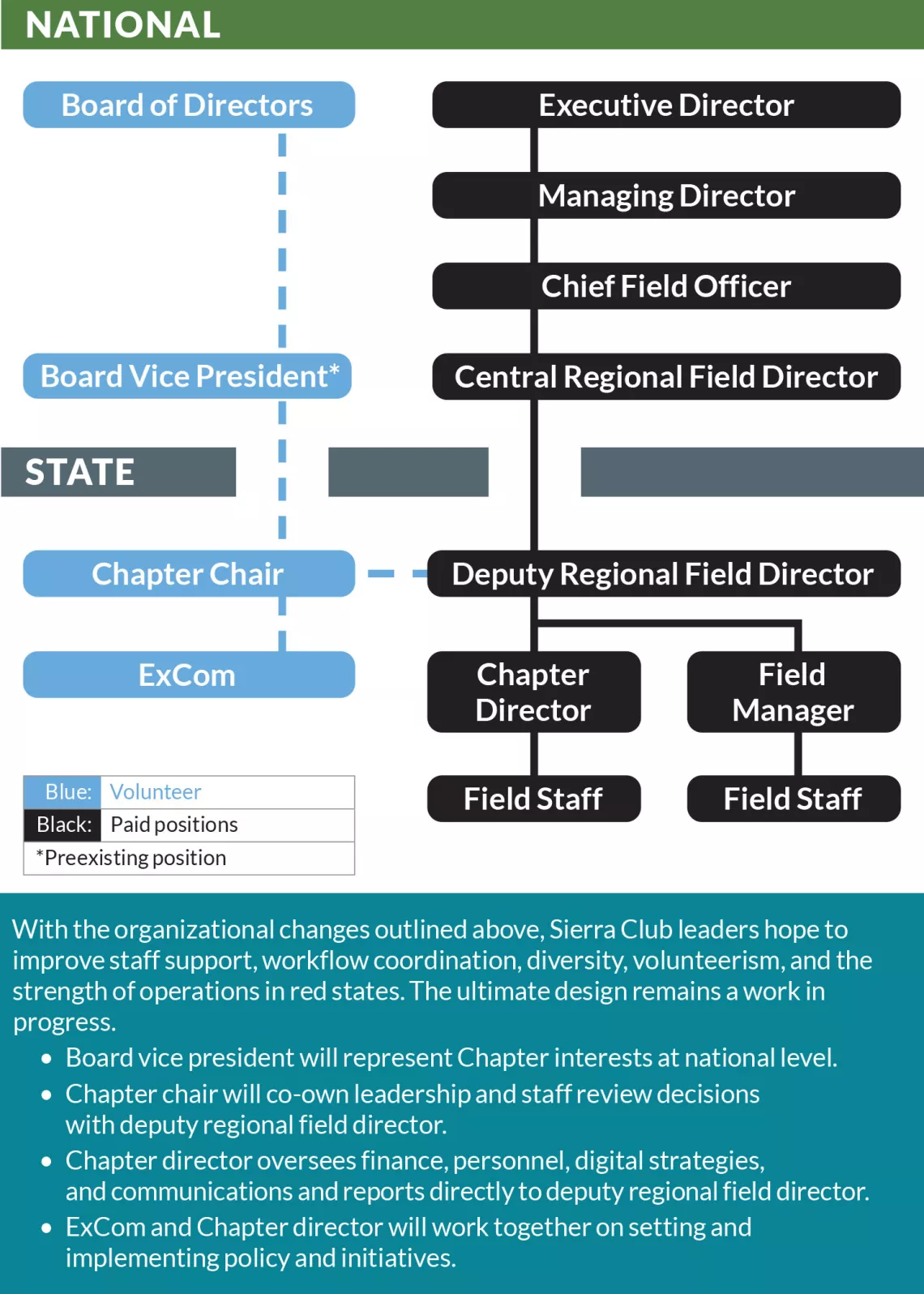By Joe Testa • NJ Chapter Delegate to the national Council of Club Leaders and CCL Chair
How do you reimagine a 130-year-old organization for success in our current political, social, and funding situation? Sierra Club has a long history of growth since its founding in California as an all-volunteer organization in 1892. It was not until 1950 that the Club established its first chapter outside of California and not until 1952 that it hired its first executive director. Up to the 1970s, the Club had a relatively small staff. Since then, the staffing in the organization has grown dramatically to support at least one chapter in every state, a significant central administration in California that coordinates conservation campaigns, and a major lobbying presence in Washington.
Even with the substantial growth of professional staff, Sierra Club remains unique among environmental organizations in that it relies on volunteers—the elected Board of Directors and elected grassroots leaders at the chapter level—to set priorities for the organization. While staff working on the national campaigns have been managed by national staff, staff working for chapters have been managed by the local volunteer leadership. This has sometimes led to duplication of effort. For example, multiple teams each have a communications staff. There has also been some inconsistency in management standards.
In some chapters, national staff have worked alongside chapter staff in a coordinated way. In other chapters, national staff and state staff have worked on different priorities. Some chapters don’t have any state staff at all and rely completely on national staff (along with local volunteers) to carry out the Club’s priorities.
A “structural assessment” of our Club’s resources led to recommendations that we move to a regional model for supporting the activism that drives our successes across the country. Since joining us in 2022, Club Executive Director Ben Jealous has repeatedly emphasized that our strength lies in our grassroots, chapter-centered expertise and enthusiasm. Motivated by an urgency to address financial shortfalls in recent budgets, Jealous and his new executive team have devised an updated management structure that builds on this strength.
The plan is to transition from national-oriented campaigns that work with chapters, along with a parallel staffing structure for each campaign that reports to national management, to a regional structure where chapters are the primary coordinators in each state. Support services will be provided by regional “hubs.” For example, communications staff will focus on regional messaging rather than an assortment of strategies by different campaigns.
A key objective in the updated management structure (Figure) is to ensure that every state has a chapter director to support the priorities established by the chapter’s volunteer executive committee (California is a special case, being the only state with multiple chapters). Right now, many of the chapters that don’t have a director or staff to support their work are in “red” states—the states where the Club’s message is especially critical to fight back against environmentally hostile government and business decisions. Jealous has committed to providing enough funding for every state to have a chapter director. In New Jersey, we have the benefit of having three staffers who have been critical in achieving our Chapter’s successes.

Another feature of the revised management structure is to relieve volunteers of administrative burden and ensure that all chapter staff have the benefit of consistent professional management. The present arrangement is a hit-or-miss situation, where some chapters have smooth staff management while others struggle with inconsistent oversight from volunteers who are not experienced at personnel management. Fifteen chapters have already moved to the new management system; other chapters will be gradually moved into this management structure as their capacity and interest permits. The NJ Chapter Executive Committee has voted to support moving into this new management arrangement sooner rather than later.
Moving from one management model to another inevitably causes some level of disruption. There has been a reassignment of job responsibilities for many national staff this past summer, and finance constraints have resulted in a reduction of some staff. This disrupts existing working relationships. The Jealous team has emphasized the expectation that all staff will work in collaboration with local volunteers. The Council of Club Leaders, as the national volunteer advisory body with a representative from each chapter, will take a leading role in working with the Jealous team and the Board of Directors to ensure that chapter perspectives are considered as the new management plan is refined and rolled out over the next several months.